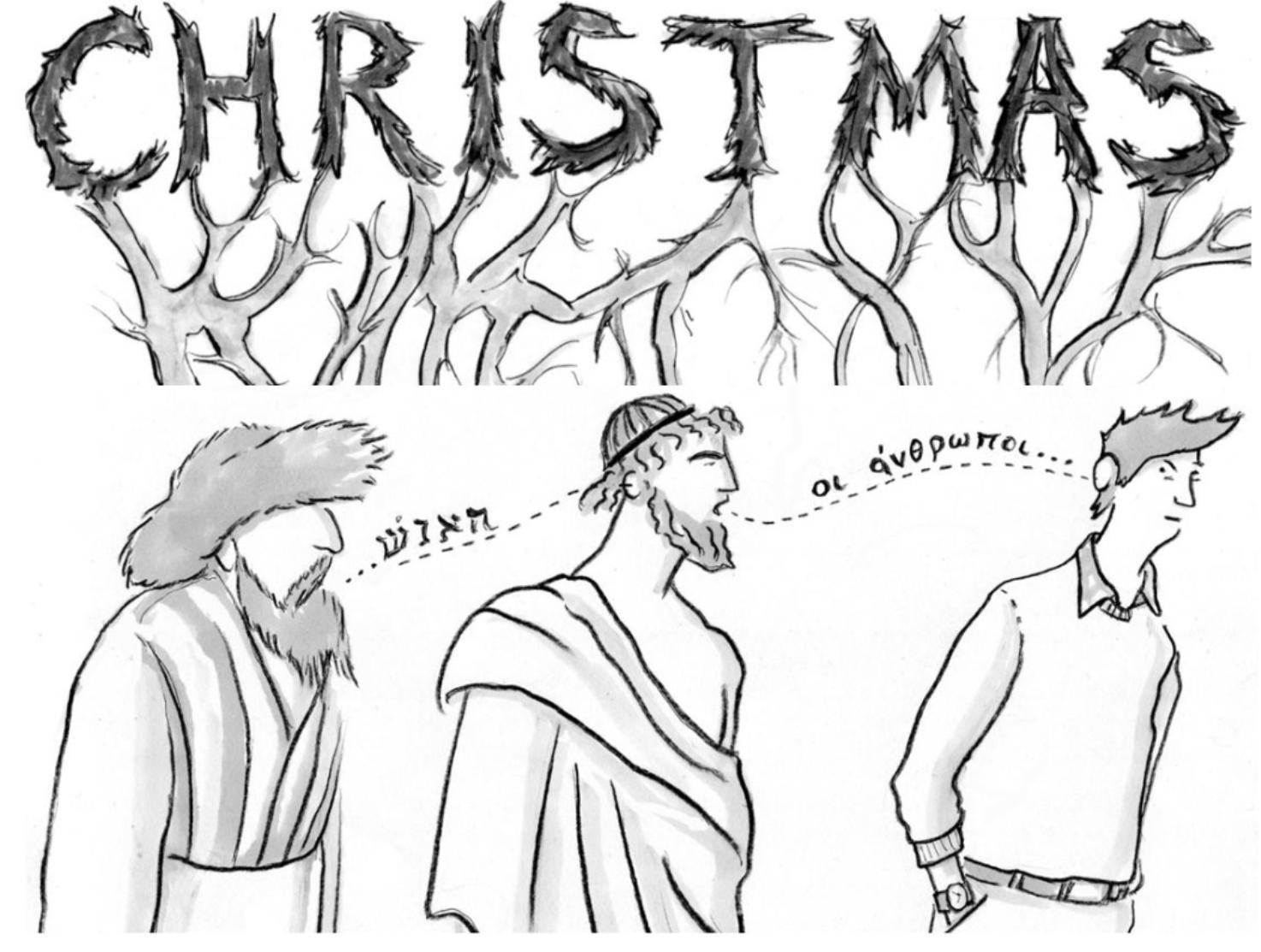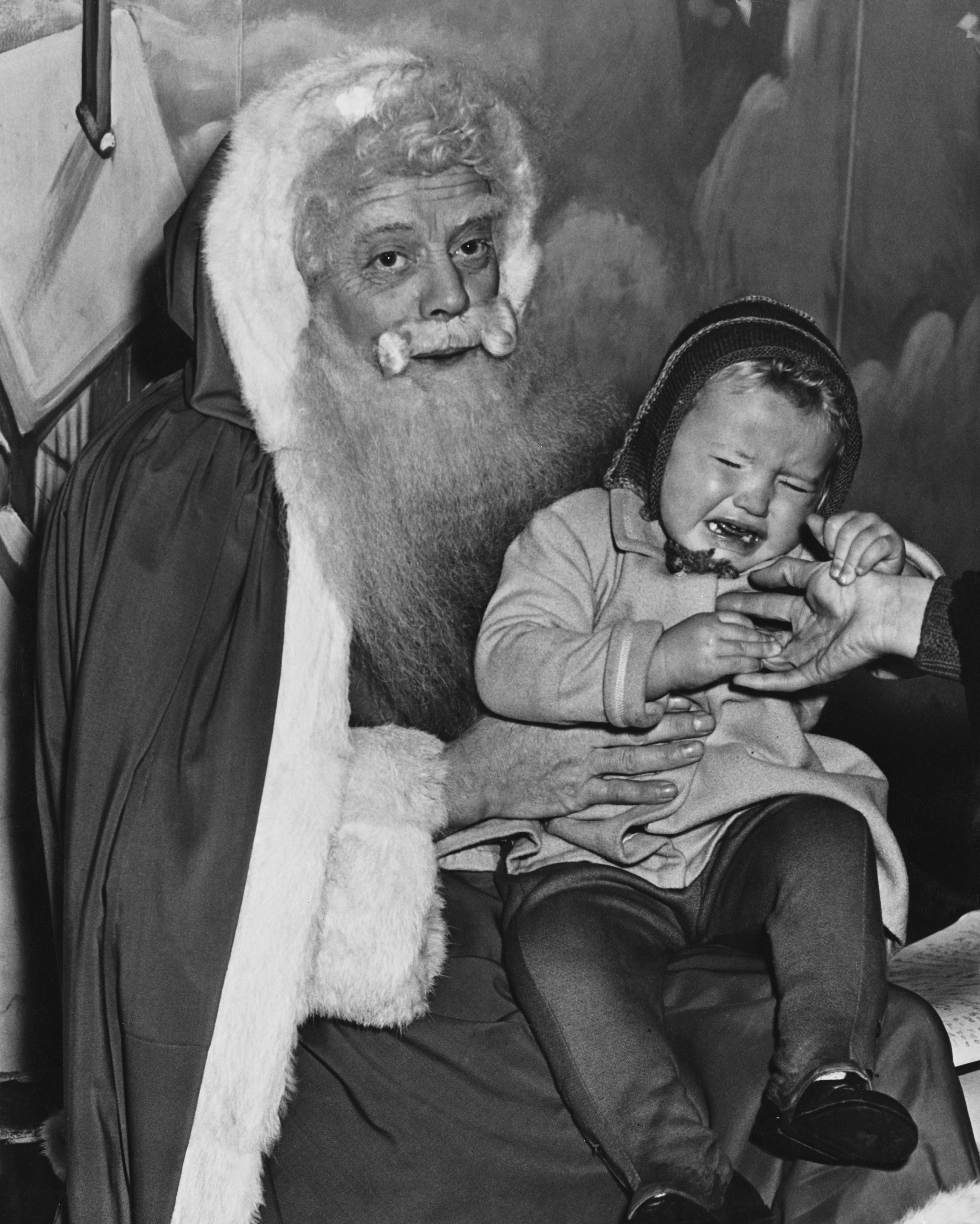How Mariah Carey stole Christmas

- Mariah Carey’s "All I Want for Christmas" is one of the most popular Christmas songs of all time.
- In an attempt to explain its success, critics point to similarities to older Christmas songs and its inclusion in the 2003 film Love, Actually.
- Other critics argue the song is not about Christmas at all, but love.
The year was 1993. Singer-songwriter Mariah Carey had just released her Music Box album, and her management team at Columbia Records was convening on a regular basis to brainstorm ideas for a follow-up. When the possibility of doing a Christmas album was brought up, the room fell silent. Carey and her long-time songwriting partner, Walter Afanasieff, had been toying with the concept for more than four years, but Afanasieff was hesitant — and for good reason.
While artists from the 1950s and 1960s had turned out numerous beloved and commercially successful Christmas songs, artists from the 1990s rarely did. During this time period, producing holiday-themed music was seen as an act of desperation, undertaken only by those whose careers had long peaked and were now ready to sell out. Carey’s career, by contrast, was just getting started, and her management feared a Christmas album — while potentially lucrative — could tarnish her rising stardom.
Ultimately, it was Carey’s producer and then-husband Tommy Mottola that convinced her to take on the project. The story goes that the songwriters put their appreciation of Christmas before their fear of failure. Creating a Christmas album, Afanasieff said in a 2014 interview with Billboard, “wasn’t a known science at all back then, and there was nobody who did new, big Christmas songs. So we were going to release it as kind of an everyday, ‘Hey, you know, we’re putting out a Christmas album. No big deal.’”
The lifespan and legacy of “All I Want for Christmas”
The album’s biggest hit, an up-tempo, pop, soul, and gospel-inspired song titled “All I Want For Christmas Is You,” only took Carey and Afanasieff 15 minutes to compose. It’s lifespan, on the other hand, would prove to be anything except short-lived. Commercially, the single saw both instant and long-term success. In the U.S., the song has topped charts every year since its release in 1994. It also topped charts in 26 other countries, ranging from Australia to Germany.
A 2016 Nielsen report revealed the song performed well on every platform, including radio airplay and streaming services, and having sold more than 16 million copies, “All I want for Christmas” is not only the highest-grossing Christmas single performed by a female artist, but also one of the highest-grossing singles in general. It is arguably the biggest hit in Carey’s career, earning the artist more than $60 million in royalties according to a report in The Economist from 2017.
On another level, “All I Want For Christmas” and the feelings it evokes have made a noticeable impact on the way we experience the holiday season. The song became ubiquitous to the point radio stations now consider it to be just as quintessentially Christmas as “Frosty the Snowman,” “Rudolf the Red-Nosed Reindeer” or — moving closer to Carey’s time — Chris Rea’s “Driving Home For Christmas.” It’s a luxury that singles from other popular musicians, like Train’s “Shake Up Christmas,” do not enjoy.
Musician and YouTuber Adam Ragusea concurs. In a review of the song written for Slate, he says that “All I Want for Christmas” is “the only Christmas song written in the last half-century worthy of inclusion in the Great American Songbook.” The extremely positive reception of her song caused Carey to be crowned the “Queen of Christmas,” a title she retained even as she moved on to other things. But just what about this song has caused it to go down in history as a modern Christmas classic?
Explanations from musicologists
One easy explanation could be that “All I Want for Christmas” borrows liberally from the composition of, well, classic Christmas music. Its explosive intro is reminiscent of Phil Spector’s “Christmas (Baby Please Come Home).” The song’s structure, an AABA schemata, is the same as those used by songs like “Frosty the Snowman” and “Rudolph the Red-Nosed Reindeer.” However, these similarities only touch the surface of Carey’s nostalgia inducing composition.
As noted by Ragusea in an interview for the YouTube channel of Vox, “All I Want For Christmas” also uses the same chords as the 1942 hit single, “White Christmas,” by Irving Berlin. “White Christmas” was written during the height of the jazz era, and traces of this bygone period of musical history — such as the usage of larger and more varied numbers of chords — made their way into the arrangement of “All I Want For Christmas” as well.
In the same video for Vox, Ragusea goes into even deeper details, explaining how the various chords used in “All I Want for Christmas” make him feel. The transition from minor 3rd to diminished 5th then followed by minor 7th, which takes place toward the end of the first chorus, is particularly unusual in modern pop music. This gives Carey’s song a nostalgic feeling that reaches beyond the holiday itself to the time period in which this holiday was first invented.
This nostalgic feeling may be amplified by the musical styles that influenced the composition of “All I Want for Christmas,” namely soul and gospel. Originated amongst and popularized by Black American communities, these styles are characterized by their euphoric tones, catchy rhythms, and spiritual sentiment. This sentiment, also faintly present in Carey’s song, harkens back to a time before incessant commercialization, when Christmas was exclusively treated as a religious holiday.
Explanations from culture critics
The hypotheses formulated by culture critics draw a connection between the enduring success of “All I Want for Christmas” and Carey’s ability to tap into a rapidly changing zeitgeist. TIME reporter Cady Lang calls it an “adult take on a Christmas song” — one that, “by eschewing children-centric holiday iconography like Santa and Rudolph for Carey’s trademark musical subject, love and romance” was able to reach a new, more lucrative demographic.
Andrew Mall, an assistant professor of music at Northeastern University interviewed by Lang for the same TIME article, supports this view. “It’s not a religious song,” he explains. “She talks about Christmas, but no religious beliefs. It’s actually a love song. Anyone can inhabit those lyrics; the lover is not named, the lover is not gendered, so anyone can put themselves in that position as needing someone to love at the holidays. It’s a secular love song and not a religious Christmas carol.”
Other critics suggest the legacy of “All I Want for Christmas” was solidified with the help of the 2003 film Love, Actually. When this star-studded film about intertwining love stories was admitted to the club of quintessential Christmas media, so too was its main soundtrack and plot device. Jocelyn Neal, music professor at UNC Chapel Hill, has pointed out how the film’s target audience — middle-class Americans — were the same people that listened to the radio and participated in music polls.
At the end of the day, Mariah Carey’s song sounds “Christmasy” not because it is a direct manifestation of the holiday’s metaphysical form, but because its borrowed style and composition make it sound like songs we already associated with Christmas. On a cultural level, Carey’s penchant for love songs and her ability to combine different genres allowed her to sing directly to people who had long stopped believing in God or Santa Claus, but still needed someone to help them get through winter.





